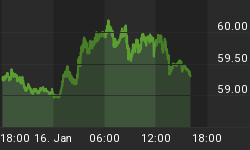Among the many things that mystify economists these days, the biggest might be the lingering perception, despite six years of ostensible recovery, that the average person is getting poorer rather than richer. Lots of culprits come in for blame, including the growing gap between the 1% and everyone else, negative interest rates (which starve savers and retirees of income) and the crappy nature of the new jobs being created in this recovery.
But one that doesn't get much mention is the changing nature of the bills we're paying. It seems that Americans are spending a lot more on health care, which leaves less for everything else. Here's an excerpt from a MarketWatch report of a couple of weeks back, with two charts that tell the tale:
Share of consumer spending on health hits another record
The percentage of money U.S. consumers spend on health care rose in 2014 for the third straight year to another record high, according to one government measure.
Some 20.6% of total consumer spending in 2014 was devoted to health care, including prescription and over-the-counter drugs, annual figures from the Commerce Department report on personal expenditures show. That's up from 20.4% in 2013.
Health-care expenses has been rising for decades regardless of government efforts to control costs. The percentage of consumer spending on health care rose from 15% in 1990, topping 20% for the first time in 2009.
CIBC Mortgage 1.99% Offer
For 9-Months on 4-Yr Fixed term. Ongoing Rate is 2.83%. (APR 2.69%). Continue at CIBC.com/Fixed-Rate-Mortgage
With the health-care pie continuing to expand, consumers are paying the same or less as percentage of their spending on most other goods and services compared to 10 years ago.
Americans spend a smaller share of their money on cars and clothing, among other things. The percentage of money they spend on housing and going out to eat is basically unchanged over the longer run.
Not surprisingly, the only other major category to show a sustained increase in spending over the past 25 years is education. The share of money Americans spend on college has climbed to 1.59% from 0.9% in 1990.
---------- End of Excerpt ---------
What this means is that we're spending more on two big categories -- health care and education -- that don't make us feel richer. Health care, of course, is just maintenance. It's like changing a car's oil or fixing a broken transmission, which only restores the status quo rather than enhancing it. Education, meanwhile, is just school. When we're in college, we don't feel richer if tuition goes up. So to the extent that those things are getting more expensive, and fun things like eating in restaurants and buying new shoes become less frequent as a result, we feel poorer -- or at least less free to indulge ourselves.
This is the opposite of what technology in particular and progress in general were supposed to bring about. As a society advances, it should get better at producing life's necessities, freeing up capital for life's joys and making most people feel both richer and more free. As John Maynard Keynes famously predicted in his 1930 essay "Economic Possibilities for our Grandchildren," another century of capital accumulation and advancing science would make it possible for most people to satisfy their basic needs with minimal effort and then go off and have fun. Wrote the economist/poet:
For at least another hundred years we must pretend to ourselves and to everyone that fair is foul and foul is fair; for foul is useful and fair is not. Avarice and usury and precaution must be our gods for a little longer still. For only they can lead us out of the tunnel of economic necessity into daylight.
We're fifteen years short of the century that Keynes predicted it would take, but the goal seems to be receding rather than approaching. That's frustrating for all the people who have to work harder than ever just to feed their families. And if it goes on much longer the result will be a very vigorous search for culprits -- which will be entertaining, even if it doesn't pay the doctor's bills.


















